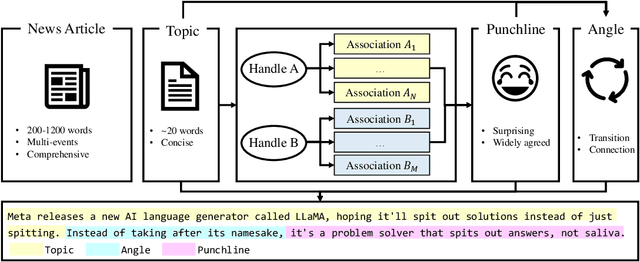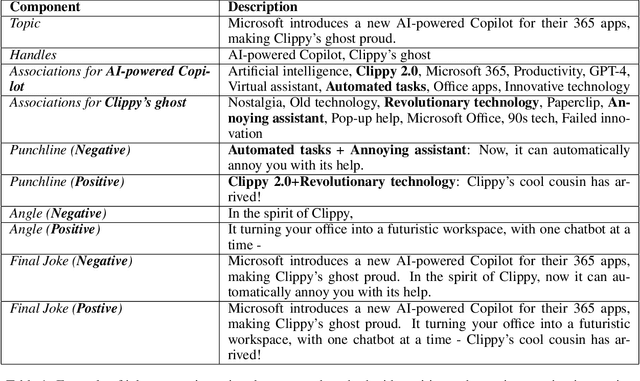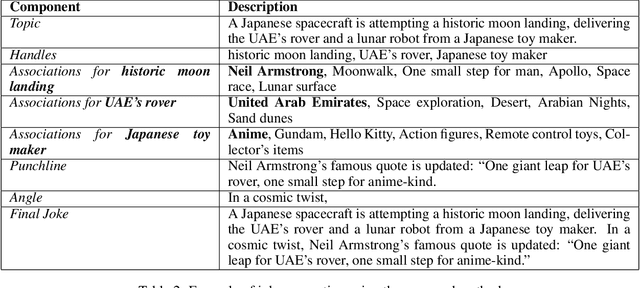Prompt to GPT-3: Step-by-Step Thinking Instructions for Humor Generation
Paper and Code
Jun 22, 2023


Artificial intelligence has made significant progress in natural language processing, with models like GPT-3 demonstrating impressive capabilities. However, these models still have limitations when it comes to complex tasks that require an understanding of the user, such as mastering human comedy writing strategies. This paper explores humor generation using GPT-3 by modeling human comedy writing theory and leveraging step-by-step thinking instructions. In addition, we explore the role of cognitive distance in creating humor.
* 5 pages, 1 figure; ICCC '23 preprint
 Add to Chrome
Add to Chrome Add to Firefox
Add to Firefox Add to Edge
Add to Edge